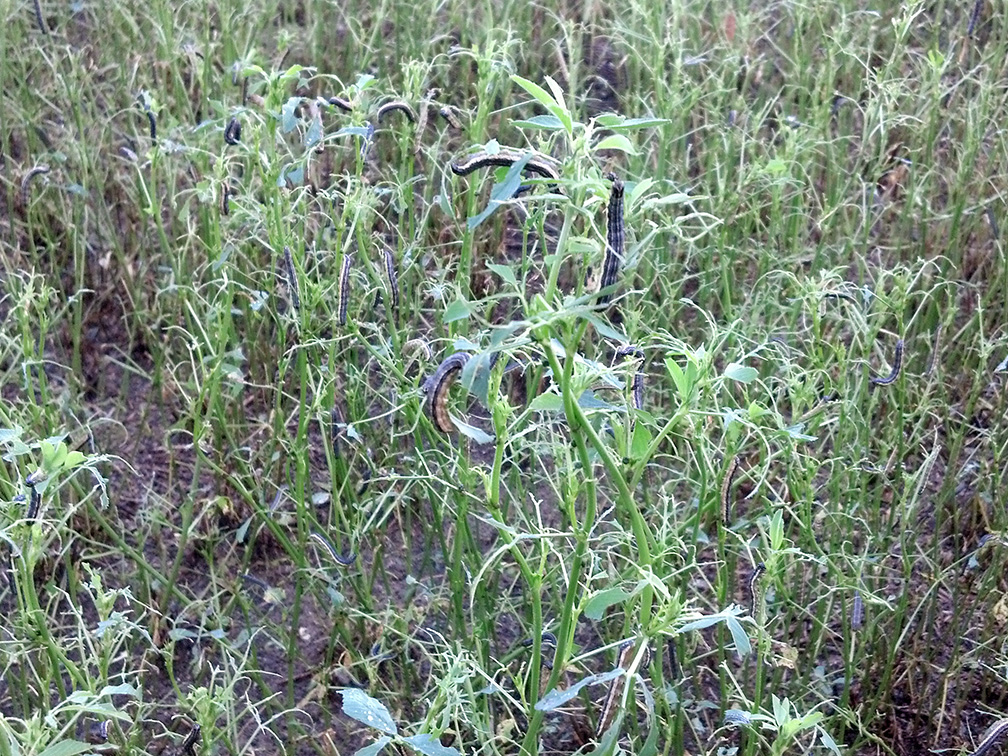Armyworm has been an occasional, yet unpleasant, surprise throughout this summer to those with grass crops, e.g, corn, orchardgrass, etc. One instance of late planted corn was documented in Pest&Crop 2018.17 (July 27). In previous late summers, we have received reports of established cover crops being denuded, in some cases from fall armyworm (different species than armyworm). Both species can consume large amounts of foliage as they “march” through a field. One major difference, armyworm feed only on grasses, while fall armyworm feeds on both grasses and broadleaves.
Those with late season crops (ANYTHING GREEN) should be inspecting for feeding damage. This is very important for newly seeded forages and cover crops. Below is listing of high-risk situations until a killing freeze occurs:
- Newly seeded grasses of any kind, including but not limited to grass and mixed grass / alfalfa hay fields, and early planted small grains.
- Established mixed grass and alfalfa hay, grass forages, lawns, parks and playing fields, etc. This insect really likes Bermuda grass, but fescue as well.
- Cover crops of ALL types, including small grains, legumes, and crucifers.
Happy Scouting!

Fall armyworm on denuded alfalfa in September.


